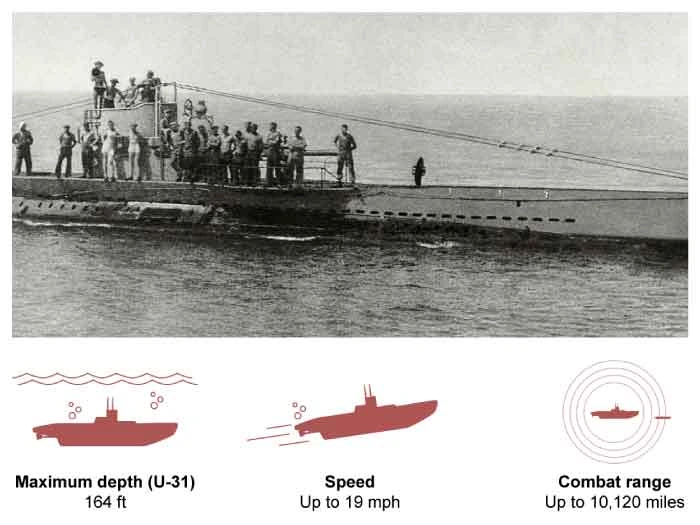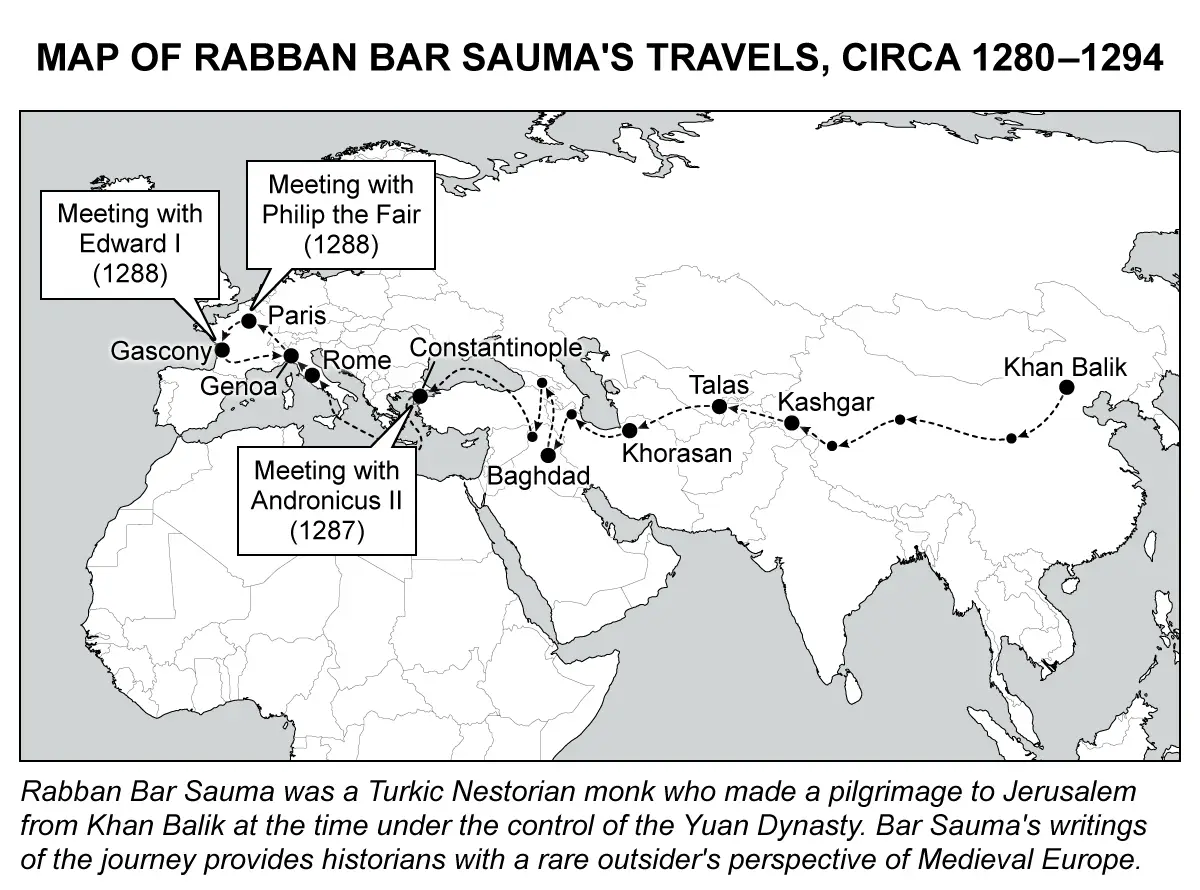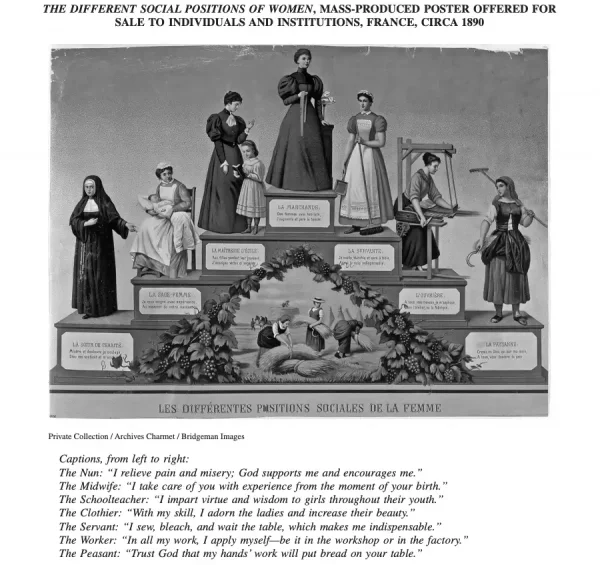AP® World History: Modern
Short-Answer Questions
Mastering the short-answer section of the AP® World History exam is essential to achieving a high score, yet it is often overlooked when preparing for the exam. The SAQs on the AP World History exam are worth 20 percent of your overall exam grade which is more than the long-essay question.
The good news is that the AP World History SAQ section is considered the most straightforward section of the test. However, this does not imply it is easy. SAQs do not simply ask you to regurgitate names and dates. Short-answer questions test your historical reasoning skills and require you to cite evidence to support a historical claim.
To get a high score, you'll need to understand what kind of SAQs to expect on the APWH exam. You'll also need to learn how to answer the questions in a way that will earn you credit. Plus, you'll need to be able to fully answer the questions within the allotted time.
Below is a breakdown of what to expect on the AP World History exam SAQ section. You'll learn about the structure and requirements of the SAQ section, as well as see examples of the different types of SAQs you will encounter. Plus, you'll find strategies and resources that will help you ace the AP World History short-answer section.
Format of the AP World History SAQ Section
On the AP World History exam, the first free response questions you will answer are the short answer questions. You have 40 minutes for this section of the exam. It's recommended that you spend no more than 15 minutes on each question.
Each SAQ is divided into three parts. And each of these parts should be between two and three sentences. It is recommended to spend less than 5 minutes on each part of the question. You are asked to either compare, describe, evaluate, explain, identify, or support an argument.
- Question 1 (required) includes a secondary source stimulus and asks you to explain a historical development or process in the period between 1200 and 2001.
- Question 2 (required) includes a primary source and asks you to explain a historical development or process in the period between 1200 and 2001.
For the final question, you can choose between Questions 3 and 4. Neither question is stimulus-based.
- Question 3 asks you to explain a historical development or process in the period between 1200 and 1750 while Question 4 asks you to explain a historical development or process in the period between 1200 and 2001.

How to Write AP World History’s Short Answer Questions?
Remember SAQs are not essays, and unlike the DBQs and LEQs, there is no need for a thesis statement; simply answer the prompt. Answering an SAQs requires you to be brief yet give enough details to answer all parts of the prompt. Bulleted lists are not acceptable. Try to be straightforward in your answer.
For an "identify" or "describe" prompt, you give a simple answer and support it with evidence. Then "explain" or "expand" by connecting your evidence to the original prompt to support your claim.
One tip is the A.C.E. method: answer, cite evidence, and explain. So first, answer the question directly in a complete sentence and avoid restating the prompt. Next, cite evidence that clearly supports your answer. Lastly, explain or provide additional context that ensures you completely answered the question.
AP World History short answer question (SAQ) examples
The first step to a perfect performance on the SAQ section of the APWH exam is knowing what to expect. Here are some examples of basic question types you'll encounter in the section.
SAQ Example 1: Non-stimulus question
Answer all parts of the question that follows.
- Identify ONE way in which the Portuguese, as a maritime empire, produced political changes in the global balance of power in the sixteenth century.
- Explain ONE way in which the Portuguese, as a maritime empire, produced economic changes in the Indian Ocean in the sixteenth century.
- Explain ONE significant way in which the Portuguese maritime empire’s relations in Asia changed by the seventeenth century, compared with its earlier relationships in the region.
SAQ Example 2: Secondary Source Question
Use the passage below to answer all parts of the question that follows.
“Inner (and Central] Asia have long been seen as a zone of contact and transmission, a lengthy conveyor belt on which commercial and cultural wares traveled between the major civilizations of Eurasia. The nomads had an essential but largely unacknowledged role in this cultural traffic. While nomadic empires had as their primary objective the control and exploitation of sedentary subjects, their secondary effect was the creation of numerous opportunities for cross-cultural contact, comparison, and exchange.
Indeed, although nomads are normally included in the analysis of the political context of trans-Eurasian exchange, they are typically left out of the cultural equation. Here the great sedentary civilizations are placed at center stage, particularly when scientific and cultural transfers are under consideration. But, as we have seen, pastoral nomads were the chief initiators, promoters, and agents of this exchange between East and West [in the thirteenth and fourteenth centuries].”
Thomas Allsen, historian, Culture and Conquest, 2001
- Identify ONE specific historical example of a cultural exchange between nomads and non-nomads that occurred in the period before 1450.
- For the period 1450-1750 C.E., identify ONE development that changed the role that Central Asian nomads played in cross-regional exchanges as described in the passage.
- Explain ONE cross-cultural exchange that would challenge the assertion in the last sentence of the passage concerning the nomads’ role in cross-regional exchanges before 1450.
SAQ Example 3: Primary source (map)
In your responses, be sure to address all parts of the questions you answer. Use complete sentences; an outline or bulleted list alone is not acceptable.
- Identify ONE difference between Rabban bar Sauma’s journey and that of either Marco Polo or Ibn Battuta who crossed Afro-Eurasia in the period 1200–1450.
- Identify ONE similarity between Rabban bar Sauma’s journey and those of most other travel writers crossing Afro-Eurasia in the period 1200–1450.
- Explain ONE way in which travel writers influenced developments in Afro-Eurasia in the period 1200–1450.
SAQ Example 4: Primary source (passage)
Use the excerpt below to answer all parts of the question that follows.
“After the Balkan War, the political balance of the Balkans being broken in a way unfavorable to Turkey, we advocated an alliance with one of the European groups to offset this disadvantage. The amiable attitude of Germany encouraged us… The German Government, however did not appear enthusiastic about it, and in its answer expressed the belief that Turkey was too weak to make an alliance with Germanys that an alliance might be useful only if contracted at a propitious time, and that for the moment the time was not ripe for such a union… In the Summer of 1914, however, Germany, to our surprise, revived our old suggestion and proposed to consider it anew. As no change had occurred in our foreign policy in the interval, there was no reason for refusing this proposal, which we had initiated some time before. Consequently in some consecutive meetings with the German Ambassador we prepared a project of alliance. Both parties easily fell into accord regarding the guiding principles and signed an agreement which would form the main lines of a political and military alliance between Germany and Turkey
Mehmed Talat Paşa, Grand Vizier of the Ottoman Empire,
Posthumous Memoirs of Mehmed Talat Paşa, 1918
In your responses, be sure to address all parts of the questions you answer. Use complete sentences; an outline or bulleted list alone is not acceptable.
- Identify ONE way in which the relationship described in the excerpt reflects political changes in the European balance of power in the late nineteenth century.
- Identify ONE way in which the relationship described in the excerpt reflects economic changes in Europe by the early twentieth century.
- Explain ONE significant way in which Turkey’s relationship with Europe changed in the twentieth century, compared with the relationship depicted in the excerpt.
SAQ Example 5: Primary Source (Art)
- Identify ONE way in which the views reflected in the image represent a continuity with traditional notions of gender roles.
- Identify ONE way in which the views reflected in the image represent a change from traditional notions of gender roles.
- Explain ONE way in which the format or intended audience of the source may have influenced the way in which gender roles are portrayed in the image.
Source: College Board
How can I practice AP World History Short Answer Questions?
Mastering the SAQ section of the APWH exam will help propel you to a 5. Practicing short-answer questions is also a great way to review content and practice timed-writing. It is important that you practice SAQs that are similar to those asked on the exam. Also, make sure to practice the secondary source questions most frequently since they will always appear in the SAQ section of the APWH exam.
Many of the SAQs from past exams are now irrelevant due to massive redesigns beginning in 2017. As part of this restructuring, the course no longer covers content before 1200. Original short-answer questions that are aligned to College Board® most current course and exam description (CED) are included in UWorld's AP World History Qbank. These questions include examples and scoring commentary.
Frequently Asked Questions (FAQ)
How many FRQs are on the AP World History exam?
Each SAQ will receive 0 to 3 points, with each part of the SAQ being worth 1 point. Here are the criteria for earning points on SAQs:
- Clarity. You must clearly communicate your answer to receive a point.
- Accuracy. Your answer must be historically defensible.
- Description. You must describe the historical process or development.
- Explanation. You must provide historical insights.
How much do you need to score in SAQ?
The SAQ section of the APWH exam accounts for 20 percent of your overall score. You can use a score calculator to see what you’ll need to score depending on how you perform on the other sections. A good thing about SAQs is that a perfect score in this section is relatively easy to achieve compared to the other sections due to their straightforward nature.
How long is the short answer section of the AP World History exam?
The short-answer section on the APWH exam contains three questions, with each question having three parts. You’ll have 40 minutes total to complete the section. Although this may seem like a lot of time, it works out to less than five minutes per part.
Where can I get the AP World History past exam short answer questions?
The College Board AP Central website has SAQs from 2002 to 2021, along with scoring commentary, available for download. However, many of the SAQs are from 2017 and older, so they are no longer applicable because the course no longer covers content before 1200.
Read More Related Articles
FRQ section is worth 40% of the AP World History Modern score. Here are the strategies & resources that will help you ace the AP World History free-response questions.
Looking for help with the multiple-choice questions? Follow the link to find strategies and resources that will help you ace the AP World History multiple-choice questions.
Don’t waste time anymore looking for a perfect guide! Here’s the all-in-one AP World History Modern study guide with proven strategies and materials to help you score a 5.
Want to learn the ins and outs of the AP World History exam? Find out all you need to know about the exam info here—What is on the exam, why take it, eligibility, etc.




